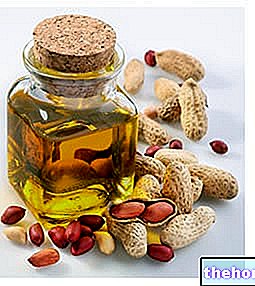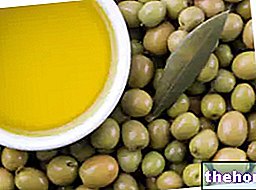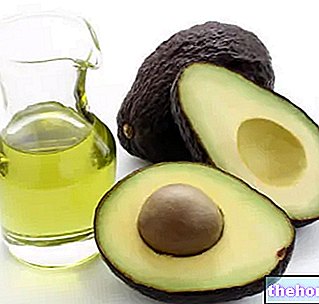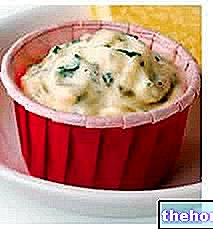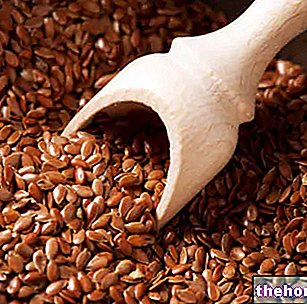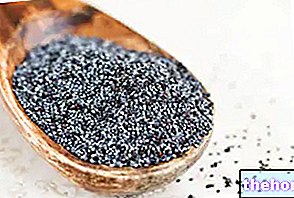Production and Uses
How is peanut oil produced?
Peanut oil is extracted from the seeds of the homonymous plant (Arachys hypogea L.), with a yield that varies between 40 and 50%.
From the seeds, the oil can be extracted by pressure or more commonly through chemical solvents. Various more or less intense rectification processes follow, to give the product acceptable organoleptic characteristics.
In less refined products, cold pressed, very small quantities of proteins may remain, however sufficient to trigger allergic reactions in hypersensitized subjects.
Features

Employments
Food uses
Precisely because of this particular flavor, peanut oil is used as table oil and in the industrial production of margarine and mayonnaise.
For the production of margarines, the "peanut oil must" undergo a partial hydrogenation process, which aims to saturate the double bonds to reduce the fluidity of the food; the so-called trans fatty acids originate from the hydrogenation process, which have a negative impact on blood cholesterol levels.
Peanut butter is obtained by grinding the seeds, with minimal addition of partially hydrogenated fats to improve their stability; therefore, generally, its pasty consistency is not due to the aforementioned hydrogenation processes, but to the presence of finely ground peanuts.
Other Uses
The residual panel, very rich in proteins, if of good quality and not contaminated by aflatoxins, is widely used in the feeding of livestock.
Peanut oil also finds space in the pharmaceutical industry, as a vehicle for fat-soluble active ingredients in parenteral dressings, and in the cosmetic sector, where it is used to produce various soaps and detergents.
Nutritional Properties
Looking at the acidic composition of peanut oil, the high content of oleic acid stands out, making it a better choice for frying than many other vegetable oils; moreover, it reduces their susceptibility to rancidity.
The content of linoleic acid, the progenitor of omega-six fats, is also excellent, while as for most of the seed oils, alpha-linolenic acid, the progenitor of the omega-three series fats, is scarce.
The vitamin E content is also discreet (about 19.1 mg of tocopherols per 100 ml of peanut oil). These characteristics, together with the absence of cholesterol and the reduced content of saturated fats, make peanut oil a valid aid in the prevention of cardiovascular diseases, as long as it is consumed with sobriety and in partial replacement of animal fats (lard, butter , lard, cream, etc.).
Furthermore, given the lack of omega three fatty acids, "peanut oil must" necessarily be inserted in a food context sufficiently rich in fish and / or vegetable oils in which these nutrients abound (hemp oil, canola oil, of linseed and safflower oil).
Other Foods - Oils and Fats Peanut Butter Cocoa Butter Butter Greaves Wheat Germ Animal Fats Margarine Vegetable Cream Tropical Oils and Fats Frying Oils Vegetable Oils Peanut Oil Borage Oil Rapeseed Oil Krill Oil Poppy Seed Oil Seed Oil Pumpkin Avocado oil Hemp oil Safflower oil Coconut oil Cod liver oil Wheat germ oil Linseed oil Macadamia oil Corn oil Almond oil Hazelnut oil Walnut oil Olive oil Palm oil fish Rapeseed oil Rice oil Pomace oil Seed oil Soybean oil Grapeseed oil Extra virgin olive oil Sesame seeds and sesame oil Lard OTHER ARTICLES OILS AND FATS Categories Food Alcoholics Meat Cereals and derivatives Sweeteners Sweets Offal Fruit Dried fruit Milk and Derivatives Legumes Oils and Fats Fish and fishery products Salami Spices Vegetables Health recipes Appetizers Bread, Pizza and Brioche First courses Seconds pi acts Vegetables and Salads Sweets and Desserts Ice creams and sorbets Syrups, liqueurs and grappa Basic Preparations ---- In the Kitchen with leftovers Carnival recipes Christmas recipes Light diet recipes for Celiacs Recipes for Diabetics Recipes for Holidays Recipes for Valentine's Day Recipes for Vegetarians Protein Recipes Regional Recipes Vegan Recipes

